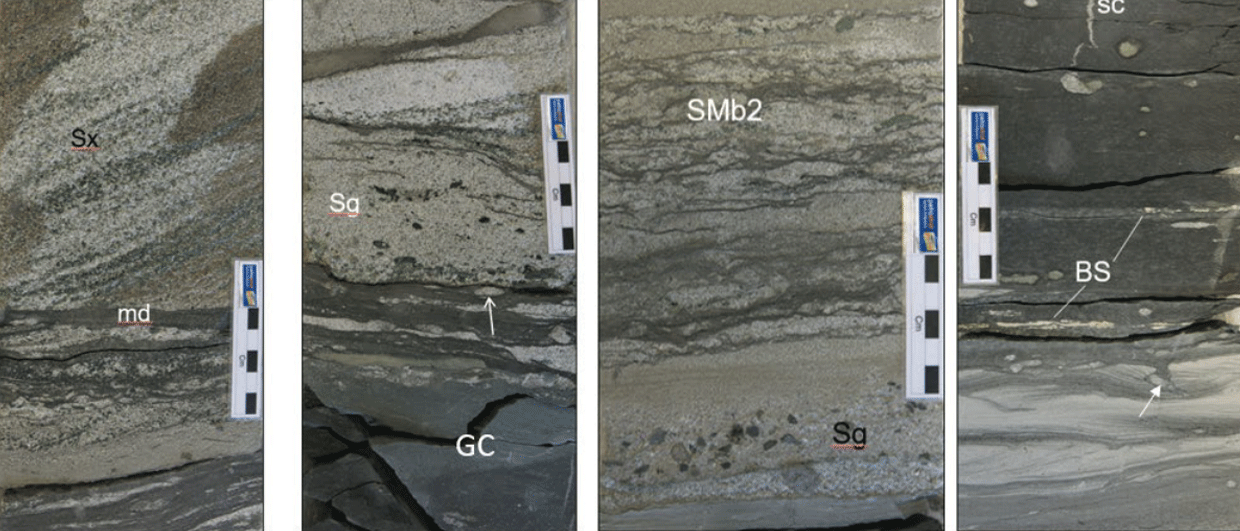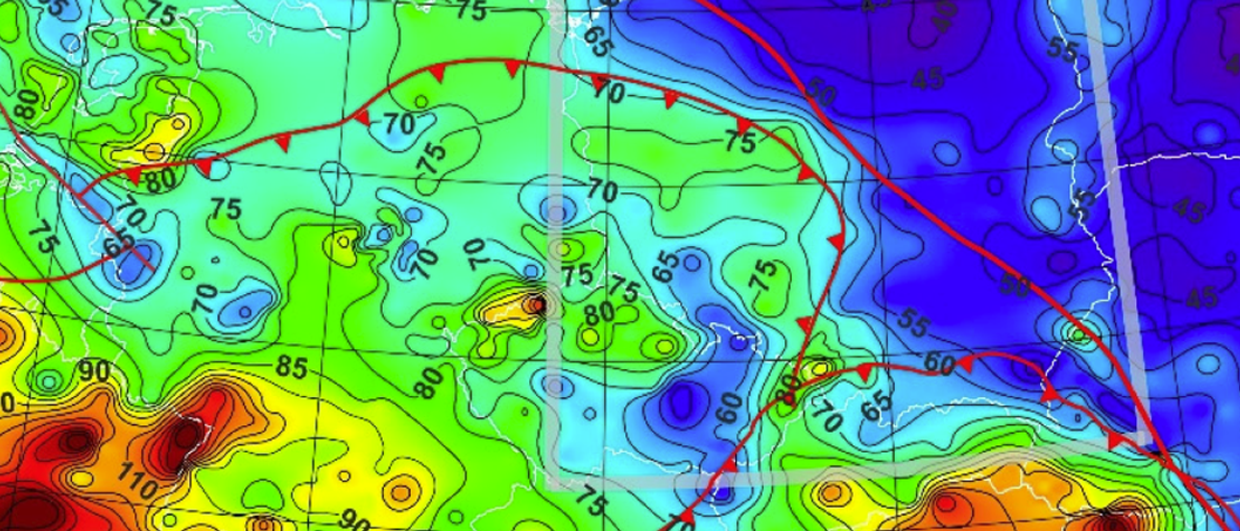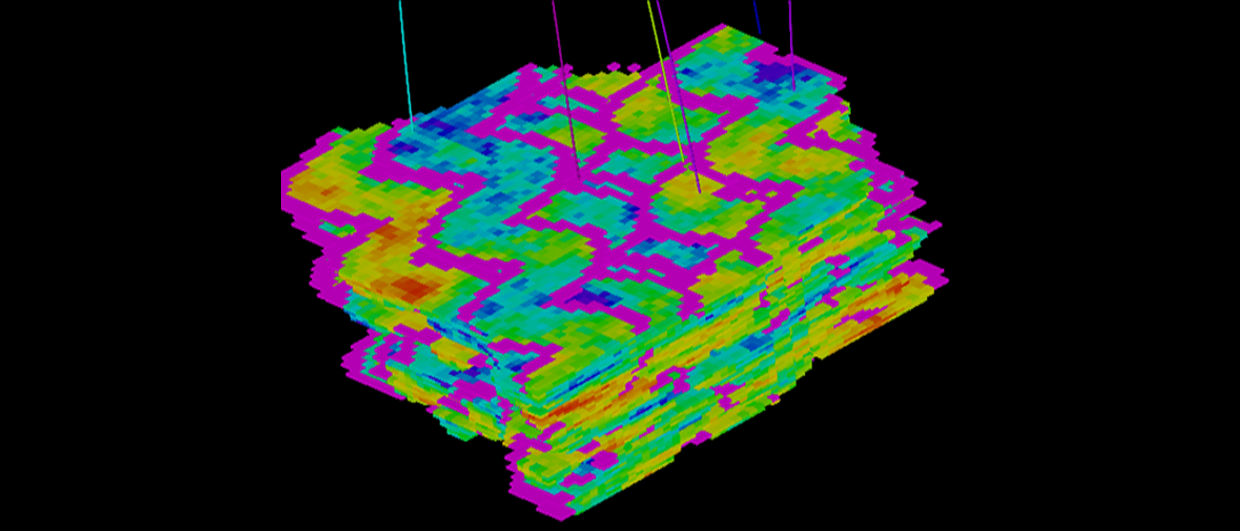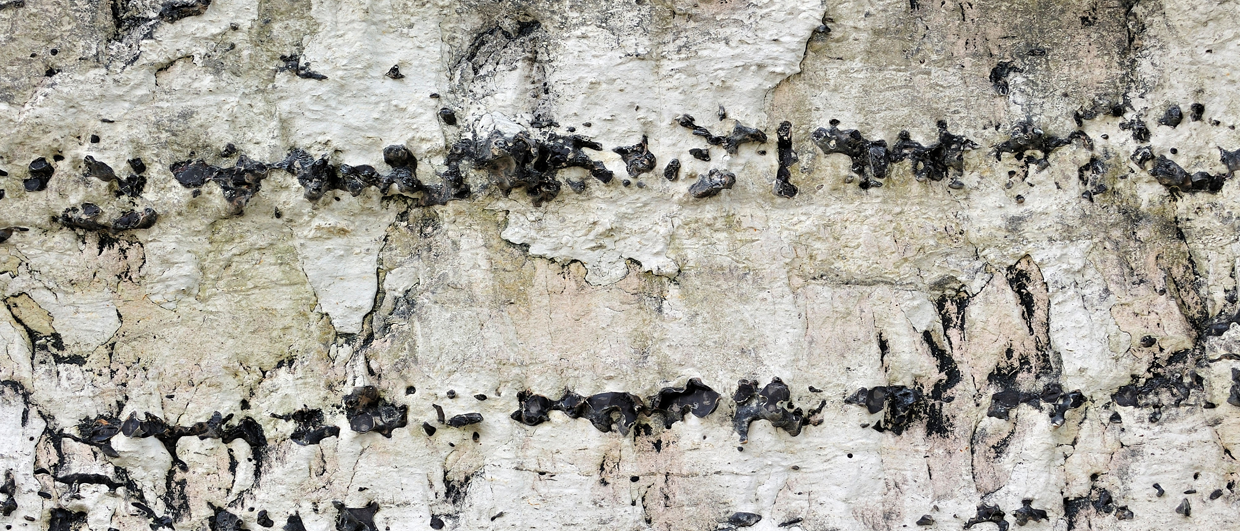Why do we need a regional stratigraphical framework for the North Sea?
The UK-Norway North Sea is a mature basin both in terms of petroleum exploration, data availability and geological studies. The first oil discovery in the Central North Sea was the Ekofisk Field in 1969, which spawned decades of research and exploration. Since then, both industry and academia have heavily researched the development of the Viking Graben, Central North Sea and Moray Firth, at the same time advancing our understanding of rifting and basin development. However, this does not mean that a fully developed and clear understanding as to how the North Sea basin developed exists.
Geosection across the Central Graben based on Exploro’s regional stratigraphic framework. Ula and Fulmar Formation sands of different Jurassic intervals penetrated by wells are shown in stars corresponding to the interval colour.
The Issues
Most studies have either been focused on smaller areas or been limited to one side of the UK–Norway border. Unfortunately, the border between British and Norwegian waters lies right along the North Sea basin axis, so regional studies have been hampered by the lack of availability of cross-border data. This has improved in recent years; however, a large knowledge gap still exists with respect to stratigraphic understanding. A regional lithostratigraphic framework representing the entire North Sea basin has yet to be produced, which creates problems when correlating lithostratigraphic nomenclature regionally or even between neighbouring sub-basins.
Many studies have attempted to solve this problem and have created their own basin-wide stratigraphical nomenclature for certain Periods, but these are mainly based on well data. This approach has certain limitations: it relies on the assumption that many group and formation tops are defined by log signatures that can be recognised regionally. More importantly, it assumes that the age of deposition for formations and groups are synchronous across the entire North Sea. These assumptions fail in settings where tectonic and depositional processes vary temporally and spatially, such as in the North Sea basin. Regional maps of the North Sea cannot be based on these lithostratigraphic schemes because they will introduce fake sedimentary thicknesses and negatively impact our geological understanding, consequently reducing our ability to come up with viable drilling targets for exploration and production. It is therefore crucial to have a basin-wide stratigraphical scheme that is both regionally consistent and grounded in geological observations so that we can make better predictions.
Regionally Correlatable Stratigraphic Markers in the North Sea
Norway-based Exploro has developed a stratigraphic scheme for North West Europe based on new and reanalysed biostratigraphy, legacy chronostratigraphy and wireline log data, rather than lithostratigraphy. This regional framework is based on regionally-correlatable stratigraphic markers such as unconformities and maximum flooding surfaces (MFS), using the transgressive-regressive cycles of Partington et al. (1993).
By relying on 1st and 2nd order maximum flooding surfaces, it is possible to map regional events in both wells and seismic data across the North Sea and the rest of North West Europe. This takes advantage of 2D and 3D seismic data, in addition to all publicly available wells (~11,000), using numerical methods for data-mining and corrections. The complete regional framework is built from combining all data and interpretations, ranging from MFSs, seismic interpretation, well logs, chronostratigraphy, seismic data, velocity, and literature and well reports. The resulting chronostratigraphic framework can be used to properly define and predict the age and extent of reservoirs, seals and source rocks, as well as timing and extent of tectonic events, burial histories, and hydrocarbon maturation, expulsion and migration.
The Ula-Fulmar Formation Sands
No play has greater variation in trapping style than the Upper Jurassic play in the Central North Sea, ranging from pure stratigraphic to combination traps and four-way structural closures above mobilised salt. The reservoirs vary from deep marine to shoreface sands, while seals consist of Upper Jurassic and Lower Cretaceous shales. The Upper Jurassic is characterised by significant over-pressures in the grabens, which have contributed to preservation of porosity at depth, while increasing cost and risk of drilling operations. The initial discoveries were the giant Fulmar (1975) and Ula (1976) fields, but many more have been made since then. Some recent discoveries of note are Oda (2011), which is now producing, King Lear (2012) and the high impact Glengorm (2019).
Gross depositional environment for the early-late Kimmeridgian in the Central North Sea. The sands deposited during on the Jæren and West Central highs were related to salt interpods.
Identifying and mapping the Upper Jurassic sands in the Central North Sea is a well-known challenge. When sandstones are encountered in the Upper Jurassic, they are often just termed Ula, Fulmar, Sandnes or Eldfisk formation sands without consideration of the age of deposition or their stratigraphic relationship with other formations. As a result, the sands assigned to these formations cover a time span from the Callovian to the Volgian. In addition, these sands are notoriously difficult to correlate as their local deposition is controlled by tectonic movement, halokenesis or local subsidence. Mapping of these plays becomes impossible when connecting sands of different ages and environments lithostratigraphically. A regional and detailed stratigraphic approach is necessary to ensure that the MFSs are consistent basin-wide, and that information is captured from beyond small sub-basins where studies are usually focused. For the Central North Sea, MFSs were interpreted in 435 wells in order to construct regional maps for the Jurassic.
West-east well section across the Central Graben with GR and sonic logs, lithostratigraphic subdivision on group level and correlated Jurassic sequences. Upper Jurassic sandstones with similar log patterns occur in three different chronostratigraphic sequences.
The resulting cross-border framework for the Jurassic highlights the backstepping and retreating shorelines through time earlier observed by Partington et al., 1993. Within the correct stratigraphical framework we can distinguish basinal turbidites, shoreface sands or interpod mini-basins. In the Callovian, shoreface and shelf sands were deposited in the shallow basins of the Feda Graben and East Central Graben. As rifting continued, we observe backstepping of the shorefaces and shelf, reflecting the tectonically-controlled transgression of the Central North Sea. Sediments are shed from the uplifted Triassic deposits in the terraces to source turbidites and salt pod-controlled shorelines. Many of the Late Kimmeridgian sands were turbidites, shed off the terraces into shallow basins. In the Volgian, the Central Graben became a linked deep marine setting, and flooding occurred over the majority of the Norwegian Central North Sea. Contemporaneous shoreface sands are limited to the highs of the West Central Shelf and Auk Ridge.
The Solution to Better Understanding the Geology of the North Sea
By placing the entire North Sea in a regional stratigraphy, we can reconstruct the basin architecture, depocenters and erosional areas and develop geological models describing the timing and depositional environments relevant for the sands of the Fulmar and Ula Formations. In this framework the lithostratigraphic names Ula and Fulmar Formations become irrelevant, and we instead focus on defining sands within Jurassic sequences. Additionally, the resulting chronostratigraphic framework can constrain timing of fault movement and halokenesis that controlled the deposition. By combining seismic and well data, Exploro has improved the stratigraphical understanding of the North Sea and overcome the challenges of dealing with locally derived stratigraphy.
Further Reading on the Geology of the North Sea and Related O&G Activity
New Insights into Hydrocarbon Potential of the Norwegian North Sea
Marit Stokke Bauck, Idar A. Kjørlaug, Silje Rogne and Anna Rumyantseva; CGG
A new regional broadband seismic dataset allows the evaluation of Patch Bank Ridge play elements in the Norwegian North Sea.
This article appeared in Vol. 16, No. 6 – 2019
Triassic Petroleum Plays in the North Sea
Henry Morris and Matt England; Azinor Catalyst
Exploring hydrocarbon play potential in new areas of the Triassic in the North Sea.
This article appeared in Vol. 15, No. 3 – 2018
UK Continental Shelf: Raising the Bar for Regional 3D Seismic in the Central North Sea
Gregor Duval, Steve Hollingworth and Luke Twigger, CGG
Well known for its challenging seismic imaging, the Central North Sea still harbours a wide range of exploration opportunities.
This article appeared in Vol. 12, No. 6 – 2016





